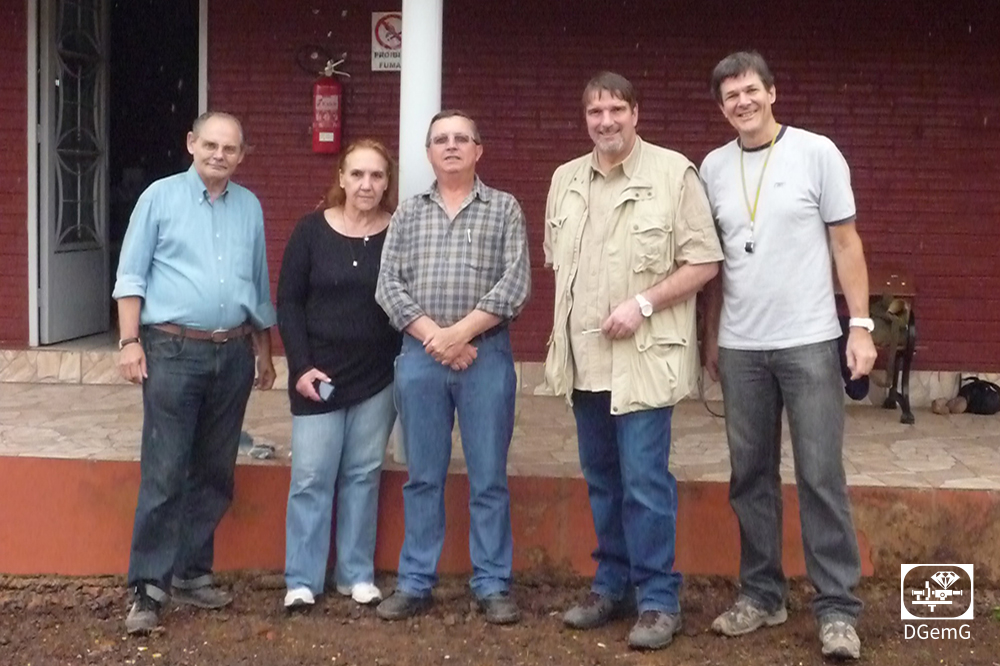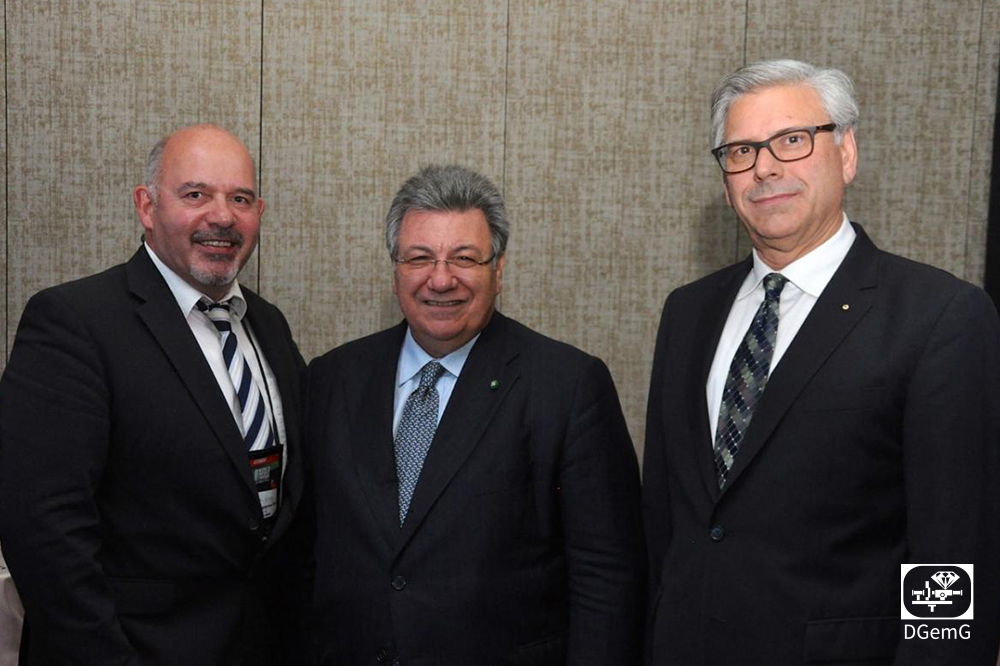One of the most important reasons for the almost simultaneous founding of the first gemmological associations in the 1930s (Gemmological Association of Great Britain and Gemological Institute of America in 1931, and German Gemmological Association in 1932) was the demand from influential parts of the gemstone and jewellery industry for a scientific based gemmology to guarantee the authenticity of its high-quality products. This was particularly important in context with the successful commercial production of synthetic corundum by the Verneuil process since the beginning of the 20th century.
Modern gemmology needs to bring science, technology and economics together, in order to provide comprehensive education and scientific information in all areas of gemmology: gemstone investigation, nomenclature, identification and research.
To achieve these goals, both DGemG and DSEF have built an extensive network of national and international collaborations over the years. This network includes scientific collaborations, communication with associations from the gemstone and jewellery industry, and the cooperation of laboratories and educational institutions.
Scientific cooperation
Since the beginnings of the gemmological laboratory of Georg O. Wild, one of the founders of the DGemG, close connections exist with scientific institutes and universities. For a better coordination and a more efficient execution of gemmological research projects, the German Foundation for Gemstone Research (DSEF) was founded in 1969. The elected president of the DGemG is, at the same time, appointed chairman of the DSEF council, which by its statutes is composed of members of the various organs of the DGemG. This organizational structure guarantees a regular communication between science and trade, which is of special significance for setting priorities in working agenda and research programs.
From 1979 to 1987, Dr. Karl Schmetzer, a research associate of the DSEF, headed a gemmological working group at the University of Heidelberg. The results of the diploma and doctoral theses of this research group resulted in numerous publications in the field of gemmology. From 1986 to 1993, individual projects were carried out with the financial support of the Ministry of Economics Rhineland-Palatinate, for which the laboratory of the German Foundation for Gemstone Research in Idar-Oberstein was equipped with modern scientific research instrumentation.
A close connection exists traditionally with the Department of Geomaterial and Gemstone Research of the Institute of Geosciences of the Johannes Gutenberg University in Mainz. As part of joint research projects, DSEF and DGemG offer internships and part-time positions for undergraduate, graduate and doctoral students.
Longtime, intense connections also exist with universities abroad. Since 2011, there has been a contractual cooperation between the DGemG and the CETEM (Centro de Tecnologia Mineral) at the University of Rio de Janeiro in Brazil. Further collaborations exist with Brazilian universities in Paraiba, Rio Grande do Sul, and Minas Gerais.
The International Gemmological Conference (IGC) is a biennial conference of leading gemmologists from all over the world. The first meeting took place in 1952 in Lugano due to the initiative of Professor Dr. Karl Schlossmacher from Germany and Dr. Eduard Gübelin from Switzerland.
Dr. Ulrich Henn and Dr. Claudio Milisenda represent the DGemG and DSEF at this conference, which took place in Idar-Oberstein in 1979 and 1997. The last conference was held in Namibia in 2017 and was supported by the German Gemmological Association and organized by Dr. Ulrich Henn and Prof. Dr. Henry Hänni.
The European Gemmological Symposium (EGS) was organized by the DGemG in Idar-Oberstein on the occasion of its 75th anniversary in 2007, for the first time. It is a joint initiative of European gemmological laboratories and institutions, with the aim of establishing a gemmological symposium of the highest international level in Europe.

Gemstone and jewellery industry
Representatives of the gemstone and jewellery industry are members of the executive and advisory boards of both DGemG and DSEF, which in return cooperate with industry associations on national and international levels to develop further international standards.
Dr. Thomas Lind is the vice president of Sector A (responsible for diamonds, pearls, coloured gemstones, coral and gemmology) of CIBJO (The World Jewellery Confederation), Dr. Claudio Milisenda is the vice president of the Gemmological Commission.
Representatives of DGemG and DSEF attend the biennial ICA (International Coloured Gemstone Association) conferences as well as the GILC (Gemstone Industry and Laboratory Conference), which is organized annually by ICA and for which Dr. Thomas Lind had been responsible for many years during his terms as board member and vice president of ICA.
Laboratory cooperation
The Laboratory of the German Foundation for Gemstone Research, also known as the German Gemlab (DSEF), is a member of the Laboratory Harmonization Committee (LMHC), a working group of leading international laboratories that are committed to develop common laboratory standards. The recommendations of LMHC are regularly presented at international conferences such as ICA, CIBJO, and other industry related organizations, as well as on its website.
On a national level, the DEL (German Diamond and Gemstone Laboratories) was founded in the year 2000, whose members are all located in the building of the German Gemmological Association at Prof. Schlossmacher Str. 1 in Idar-Oberstein. In addition to DGemG and DSEF, these include the DPL (Diamond Grading Lab), DEGEB( German Association for Gemstone Evaluation) and IFE (Institute for Gemstone Research, Department of Geomaterial and Gemstone Research of the Institute of Geosciences of the Johannes Gutenberg University in Mainz).
Educational cooperation
On a national level, there are contracts to teach gemmology to students of trade and master craftsmanship colleges and cooperations in further education of craft guilds.
Due to the significant participation of today's honorary president of the DGemG, Prof. Dr. Hermann Bank, and the managing director and head of the training centre of the DGemG, Dr. Ulrich Henn, the FEEG (Federation for European Education in Gemmology) was founded in 1996. The purpose of this organization, which includes twelve European gemmological institutions from eight European countries, is to conduct a gemmological examination based on uniform standards on a European level. Dr. Ulrich Henn has been involved in developing these standards as chairman of the FEEG examination board for many years. Tom Stephan is the current FEEG project manager within the DGemG.
This article was first published in a special programme issue for the 50-years anniversary of the DSEF German Gem Lab in 2019.



